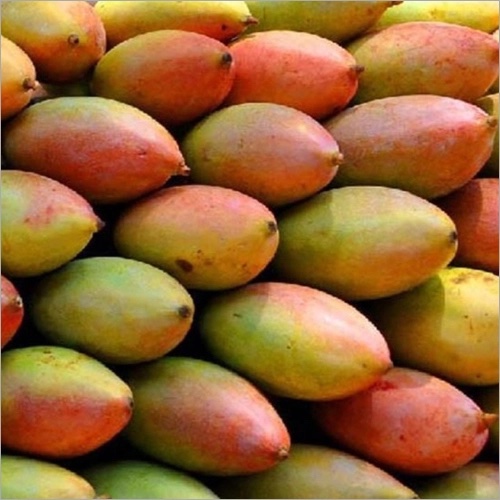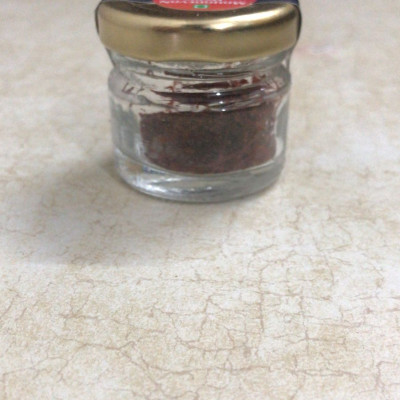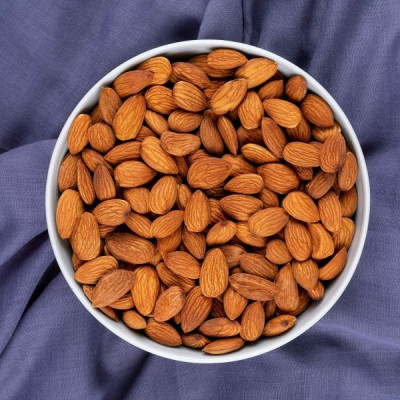Fruits
Totapuri Mango: The Exotic Delight

Totapuri Mango: The Exotic Delight
Introduction
Welcome to the enchanting world of Totapuri mangoes, where tropical flavors and delightful experiences await. In this comprehensive article, we will delve into the unique qualities, intriguing history, and irresistible appeal of the Totapuri mango variety.
Our aim is to provide you with a detailed understanding of this exotic fruit and equip you with the knowledge to truly appreciate its allure.
Regions where Totapuri mangoes are cultivated:
- Andhra Pradesh: Totapuri mangoes are extensively cultivated in the Chittoor, Nellore, and Krishna districts of Andhra Pradesh. These regions have favorable climatic conditions, including hot summers and well-drained soil, which are ideal for the cultivation of Totapuri mangoes.
- Tamil Nadu: The Salem, Erode, and Krishnagiri districts of Tamil Nadu are prominent regions known for the cultivation of Totapuri mangoes. The tropical climate and fertile soil in these areas contribute to the growth of high-quality Totapuri mangoes.
- Karnataka: Totapuri mangoes are widely grown in the districts of Chikkaballapur, Kolar, Ramanagara, and Davanagere in Karnataka. These regions benefit from a warm climate and rich soil, making them suitable for cultivating Totapuri mangoes.
- Telangana: In Telangana, the Medak, Mahbubnagar, and Nizamabad districts are known for their Totapuri mango cultivation. The region's semi-arid climate and well-drained soil create favorable conditions for the growth of these mangoes.
- Kerala: Totapuri mangoes are also grown in certain regions of Kerala, including Palakkad, Thrissur, and Malappuram districts. The tropical climate and fertile soil in these areas support the cultivation of Totapuri mangoes.
Appearance of Totapuri mango
- Shape: Totapuri mangoes have an elongated and oblong shape, tapering towards one end, resembling a parrot's beak or a "totapuri" bird's beak.
- Color (Unripe): When unripe, the mangoes display shades of light green to deep green, with hints of yellow.
- Color (Ripe): As the mangoes ripen, they turn into a bright and attractive yellow, often with a reddish blush on the exposed side.
- Skin: The skin of Totapuri mangoes is smooth, thin, and firm.
- Flesh: The flesh is firm, juicy, and slightly fibrous near the seed. It has a vibrant golden-yellow color.
- Aroma: Totapuri mangoes have a delightful aromatic fragrance that intensifies as they ripen.
- Visual Appeal: The distinctive shape, vibrant colors, and inviting fragrance make Totapuri mangoes visually appealing.
- Premium Variety: Totapuri mangoes are considered an exotic and premium mango variety.
Flavor of Totapuri mango:
- Sweet and Tangy: The flavor of Totapuri mangoes can be described as a delightful balance between sweetness and tanginess. It has a naturally sweet taste with a pleasant tangy undertone that adds a refreshing twist to each bite.
- Tropical Aromatics: When you take a bite of a ripe Totapuri mango, you'll experience a burst of tropical aromas that enhance the overall sensory experience. The aroma is both inviting and appetizing, contributing to the enjoyment of the fruit.
- Mild Acidity: Totapuri mangoes have a subtle level of acidity that complements their sweetness. The slight tanginess adds depth and complexity to the flavor, making it more interesting and satisfying.
- Juicy and Succulent: The flesh of Totapuri mangoes is juicy and succulent, offering a satisfying eating experience. The abundant juice content amplifies the flavors and makes each bite moist and refreshing.
- Versatile Culinary Uses: The unique flavor of Totapuri mangoes makes them suitable for a wide range of culinary applications. They can be used in both sweet and savory dishes, including mango salads, chutneys, desserts, smoothies, and refreshing beverages.
- Flavor Intensifies when Ripe: As Totapuri mangoes ripen further, their flavor becomes more pronounced and intense. Ripe Totapuri mangoes reach their peak sweetness and tanginess, offering the most enjoyable flavor experience.
- Distinctive Taste Profile: The flavor of Totapuri mangoes stands out due to its unique combination of sweetness, tanginess, and tropical notes. It is a taste that is cherished by mango enthusiasts who appreciate its distinctive and memorable flavor.
Versatility of Totapuri mangoes:
- Culinary Adaptability: Totapuri mangoes are incredibly versatile and can be used in a wide range of culinary creations, both sweet and savory. Their unique flavor profile lends itself well to various dishes, making them a popular choice among chefs and home cooks alike.
- Salads and Salsas: The firm and slightly tangy flesh of Totapuri mangoes makes them an excellent addition to fresh fruit salads and salsas. They bring a burst of tropical sweetness and acidity to these dishes, enhancing their flavor and adding a refreshing element.
- Chutneys and Dips: Totapuri mangoes are frequently used to make tangy and flavorful chutneys and dips. Their natural tanginess complements the spicy and savory ingredients in these condiments, creating a delicious balance of flavors.
- Curries and Sauces: The unique taste of Totapuri mangoes can be utilized in curries and sauces, adding a touch of sweetness and tanginess. They are particularly popular in South Asian cuisine, where they lend their distinct flavor to both vegetarian and meat-based dishes.
- Beverages and Desserts: Totapuri mangoes are perfect for making refreshing mango beverages, such as smoothies, shakes, and lassis. They also shine in desserts like mango ice cream, sorbets, and puddings, where their sweet and tangy flavor enhances the overall taste experience.
- Pickling: The firm texture of Totapuri mangoes makes them an excellent choice for pickling. They can be pickled in a variety of ways, such as sweet and tangy pickles or spicy mango pickles, preserving their unique flavor for an extended period.
- Exotic Flair: Totapuri mangoes bring an exotic and tropical flair to any dish they are incorporated into. Their vibrant color, distinct shape, and aromatic fragrance make them visually appealing, elevating the presentation of both simple and elaborate culinary creations.
Nutritional benefits of Totapuri mangoes:
- Rich in Vitamins: Totapuri mangoes are an excellent source of essential vitamins, including vitamin C, vitamin A, and vitamin E. These vitamins support immune function, promote healthy skin, and contribute to overall well-being.
- High in Dietary Fiber: Totapuri mangoes are a good source of dietary fiber, which aids digestion and helps maintain a healthy digestive system. Fiber also contributes to feelings of fullness, which can be beneficial for weight management.
- Packed with Antioxidants: Totapuri mangoes contain various antioxidants, including polyphenols and carotenoids. These antioxidants help protect the body against damage caused by harmful free radicals, reducing the risk of chronic diseases.
- Hydration: With their high water content, Totapuri mangoes are hydrating and can contribute to maintaining optimal hydration levels in the body. This is beneficial for overall health and helps support various bodily functions.
- Natural Energy Boost: Totapuri mangoes are a good source of natural sugars, providing a quick and natural energy boost. They are a healthier alternative to processed sugars and can be a satisfying snack option.
- Mineral Content: Totapuri mangoes contain essential minerals such as potassium and magnesium. These minerals play a vital role in maintaining proper nerve function, regulating blood pressure, and supporting bone health.
- Low in Fat and Cholesterol: Totapuri mangoes are naturally low in fat and cholesterol, making them a healthy choice for those looking to maintain a balanced diet and manage their cholesterol levels.
Health benefits of Totapuri mangoes:
- Boosts Immunity: Totapuri mangoes are rich in vitamin C, which helps strengthen the immune system and protects against common illnesses like colds and flu.
- Enhances Digestive Health: The high fiber content in Totapuri mangoes promotes healthy digestion, prevents constipation, and supports a healthy gut.
- Supports Eye Health: Totapuri mangoes are a good source of vitamin A and other antioxidants that promote eye health, reducing the risk of age-related macular degeneration and improving night vision.
- Promotes Skin Health: The antioxidants and vitamins in Totapuri mangoes help nourish the skin, improve complexion, and maintain a youthful appearance.
- Provides Energy: Totapuri mangoes are a natural source of carbohydrates and sugars, offering a quick and natural energy boost, making them an excellent choice for athletes or those needing an energy pick-me-up.
- Aids Weight Management: With their high fiber content and low-calorie profile, Totapuri mangoes can help control appetite, manage weight, and support healthy weight loss.
- Hydrates the Body: Totapuri mangoes have a high water content, helping to hydrate the body and maintain proper fluid balance.
- Supports Heart Health: The potassium content in Totapuri mangoes helps regulate blood pressure, reducing the risk of cardiovascular diseases.
- Anti-inflammatory Properties: The phytochemicals in Totapuri mangoes possess anti-inflammatory properties, helping to reduce inflammation and associated health issues.
- Provides Essential Nutrients: Totapuri mangoes are a rich source of vitamins, minerals, and antioxidants that contribute to overall health and well-being.
Availability of Totapuri mangoes:
- Geographical Availability: Totapuri mangoes are primarily grown and cultivated in South India, particularly in the states of Andhra Pradesh, Karnataka, and Tamil Nadu. These regions have favorable climatic conditions that are ideal for the cultivation of Totapuri mangoes.
- Domestic Availability: Within India, Totapuri mangoes are abundantly available in local markets and grocery stores during the peak mango season, which typically runs from April to June. They are highly sought after and enjoyed by mango enthusiasts across the country.
- International Availability: Totapuri mangoes have gained popularity in the international market and are exported to various countries. They can be found in select Asian markets, as well as in countries like the United States, Canada, Europe, and the Middle East, where they are cherished for their unique flavor and culinary versatility.
- Fresh and Processed Forms: Totapuri mangoes are available in both fresh and processed forms. Fresh Totapuri mangoes are sold as whole fruits, allowing consumers to enjoy their natural flavor and sweetness. They are also used in the production of mango-based products such as purees, concentrates, and juices, which are available year-round.
- Seasonal Availability: Totapuri mangoes have a specific harvesting season, typically from March to July, depending on the region. During this period, they are readily available in abundance. Outside of the peak season, their availability may be limited, and they may be more expensive due to the demand and supply dynamics.
Storage and shelf life of Totapuri mangoes:
- Ripening: Totapuri mangoes are usually harvested when they are mature but still firm. If you prefer to consume them ripe, you can keep them at room temperature until they reach the desired ripeness. Placing them in a paper bag or wrapping them in the newspaper can help accelerate the ripening process.
- Refrigeration: Once Totapuri mangoes are ripe, you can store them in the refrigerator to prolong their shelf life. Place the ripe mangoes in a breathable bag or wrap them individually in paper towels to prevent moisture buildup, which can lead to spoilage.
- Shelf Life: When stored properly, Totapuri mangoes can last for up to 5-7 days in the refrigerator. However, it's important to note that the shelf life can vary depending on the ripeness at the time of refrigeration and the overall quality of the mangoes.
- Freezing: If you have excess Totapuri mangoes or want to store them for a longer period, you can freeze them. Peel and slice the mangoes, then place the pieces in an airtight container or freezer bag. Frozen Totapuri mangoes can retain their quality for up to 6 months.
- Quality Check: Before consuming or storing Totapuri mangoes, check for any signs of spoilage, such as mold, mushiness, or off-putting odors. Discard any mangoes that appear damaged or overripe to prevent them from affecting the quality of the others.
Importing countries for Totapuri mangoes:
- United States: The United States is a significant importer of Totapuri mangoes, with a growing demand for these flavorful fruits in various regions across the country.
- United Kingdom: The UK has a strong market for Totapuri mangoes, with consumers appreciating their unique taste and versatility in culinary applications.
- Germany: Germany is another prominent importer of Totapuri mangoes, where they are sought after for their vibrant flavor and used in various dishes, desserts, and beverages.
- Netherlands: The Netherlands serves as a major distribution hub for Totapuri mangoes in Europe, supplying them to neighboring countries where demand is high.
- United Arab Emirates (UAE): The UAE, especially Dubai, is a significant importer of Totapuri mangoes due to the large expatriate population and the popularity of mangoes in the region.
- Saudi Arabia: Saudi Arabia is a prominent market for Totapuri mangoes, with consumers eagerly awaiting the arrival of these mangoes during the peak season.
- Singapore: Singapore imports a significant quantity of Totapuri mangoes to cater to the local demand and to distribute to neighboring Southeast Asian countries.
- Malaysia: Totapuri mangoes are also in demand in Malaysia, where they are used in various traditional dishes, desserts, and beverages.
FAQ
Q: What is the export potential of Totapuri mangoes?
A: Totapuri mangoes have a high export potential due to their unique flavor, firm texture, and longer shelf life, making them popular in international markets.
Q: Which countries are the major importers of Totapuri mangoes?
A: The major importers of Totapuri mangoes include the United States, European countries (such as the UK, Netherlands, and Germany), Middle Eastern countries (like UAE and Saudi Arabia), and Asian countries (such as Singapore and Malaysia).
Q: What are the export regulations and certifications required for exporting Totapuri mangoes?
A: Exporting Totapuri mangoes requires adherence to specific regulations and certifications, such as obtaining phytosanitary certificates, complying with quality standards set by importing countries, and ensuring proper packaging and labeling as per international standards.
Q: What is the best time to export Totapuri mangoes?
A: The best time to export Totapuri mangoes is during the peak harvest season, which typically falls between April and July. This ensures the availability of fresh and high-quality mangoes for international markets.
Q: How should Totapuri mangoes be packed for export?
A: Totapuri mangoes should be packed carefully to ensure their protection during transportation. They are usually packed in corrugated cartons or boxes with appropriate cushioning material to prevent bruising and damage. Proper ventilation and temperature control may also be required, depending on the destination.
Q: What are the shipping methods commonly used for exporting Totapuri mangoes?
A: Airfreight and sea freight are the commonly used shipping methods for exporting Totapuri mangoes. Airfreight allows for faster delivery, while sea freight is a more economical option for larger shipments.
Q: How can exporters ensure the quality and freshness of Totapuri mangoes during transit?
A: To maintain the quality and freshness of Totapuri mangoes during transit, exporters use temperature-controlled storage facilities, follow cold chain protocols, and employ advanced packaging techniques to minimize temperature fluctuations and moisture loss.
Q: What is the shelf life of Totapuri mangoes during transit?
A: With proper storage and shipping conditions, Totapuri mangoes can have a shelf life of approximately 2-3 weeks during transit, ensuring that they reach international markets in good condition.
Q: What is the best way to pack Totapuri mangoes for shipping?
A: Totapuri mangoes should be carefully packed to ensure their protection during shipping. They are commonly packed in corrugated cartons or boxes with cushioning material to prevent bruising and damage. Proper ventilation and temperature control may also be necessary.
Q: How should Totapuri mangoes be handled during packing to avoid damage?
A: During packing, it is important to handle Totapuri mangoes with care to avoid any bruising or cuts on the fruit. Workers should use gentle handling techniques and avoid piling too many mangoes on top of each other to prevent pressure damage.
Q: What are the packaging requirements for exporting Totapuri mangoes?
A: Packaging requirements may vary based on destination countries and import regulations. However, in general, Totapuri mangoes are packed in clean, food-grade containers with proper labeling, including information about the origin, variety, and quantity of mangoes.
Q: What type of materials are used for cushioning inside mango packaging?
A: Common cushioning materials used inside mango packaging include foam inserts, paper or cardboard dividers, or biodegradable packaging materials. These materials help protect the mangoes from physical impact and reduce movement during transit.
Q: What are the temperature requirements during the shipping of Totapuri mangoes?
A: Totapuri mangoes are typically shipped at temperatures between 10°C to 13°C (50°F to 55°F) to maintain their quality and prolong shelf life. Temperature-controlled shipping containers or refrigerated trucks are used to ensure the desired temperature is maintained.
Q: How should the shipping containers be loaded to ensure proper airflow?
A: Proper airflow is essential to prevent the buildup of excess moisture and maintain the quality of Totapuri mangoes during shipping. Containers should be loaded in a way that allows air to circulate freely between the cartons, ensuring adequate ventilation.
Q: What is the recommended shipping method for Totapuri mangoes?
A: The recommended shipping method for Totapuri mangoes is typically airfreight. It allows for faster transit times, reducing the chances of spoilage. However, sea freight can also be used for larger shipments or when cost considerations are a priority.
Q: How can exporters ensure that the mangoes remain fresh during transit?
A: To ensure the freshness of Totapuri mangoes during transit, exporters use proper refrigeration systems, employ cold chain logistics, and monitor temperature and humidity levels throughout the shipping process.
Q: What are the requirements for exporting Totapuri Mango?
A: Exporting Totapuri Mango requires compliance with specific regulations. These may include obtaining phytosanitary certificates, ensuring quality control, proper packaging, and adherence to import regulations of the destination country.
Q: Which countries import Totapuri Mango?
A: Totapuri Mango is exported to various countries around the world. Some popular importers include the United States, United Kingdom, Canada, Germany, the Middle East, and Southeast Asian countries.
Q: How can I find buyers for exporting Totapuri Mango?
A: Finding buyers for exporting Totapuri Mango can be done through trade directories, industry associations, international trade exhibitions, and online platforms dedicated to agricultural produce and exports.
Q: What is the best time to export Totapuri Mango?
A: The best time to export Totapuri Mango depends on the specific season and the demand in the target market. It is generally recommended to export during the peak harvest season to ensure freshness and quality.
Q: How can I ensure the quality of exported Totapuri mangoes?
A: To ensure quality, it is crucial to implement proper post-harvest handling practices, including careful sorting, grading, and packing of the mangoes. Additionally, maintaining a controlled temperature throughout the transportation process is essential.
Q: Are there any restrictions or regulations for exporting Totapuri Mango?
A: Yes, exporting Totapuri Mango is subject to regulations set by both the exporting and importing countries. These regulations may include phytosanitary requirements, labeling standards, and compliance with maximum residue limits (MRLs) for pesticides.
Q: How can I arrange transportation for exporting Totapuri Mango?
A: Transportation for exporting Totapuri Mango can be arranged through various means, such as air freight, sea freight, or land transportation. Working with experienced logistics providers familiar with handling perishable goods is recommended.
Q: What is the shelf life of exported Totapuri mangoes?
A: The shelf life of exported Totapuri Mango depends on various factors, including the maturity of the mangoes at the time of export and the storage conditions during transit. Generally, Totapuri Mangoes can remain fresh for a few weeks when stored under optimal conditions.
Q: Can I export Totapuri Mango in different forms, such as pulp or puree?
A: Yes, exporting Totapuri Mango in different forms, such as pulp or puree, is possible. However, it is important to ensure compliance with the regulations of both the exporting and importing countries for processed mango products.
Q: What is the demand for Totapuri Mango in the international market?
A: Totapuri Mango is in demand in the international market due to its unique flavor and versatility in culinary applications. It is sought after by food processors, juice manufacturers, and consumers looking for exotic mango varieties.
click the below links to place an order






 FRUITS
FRUITS 





